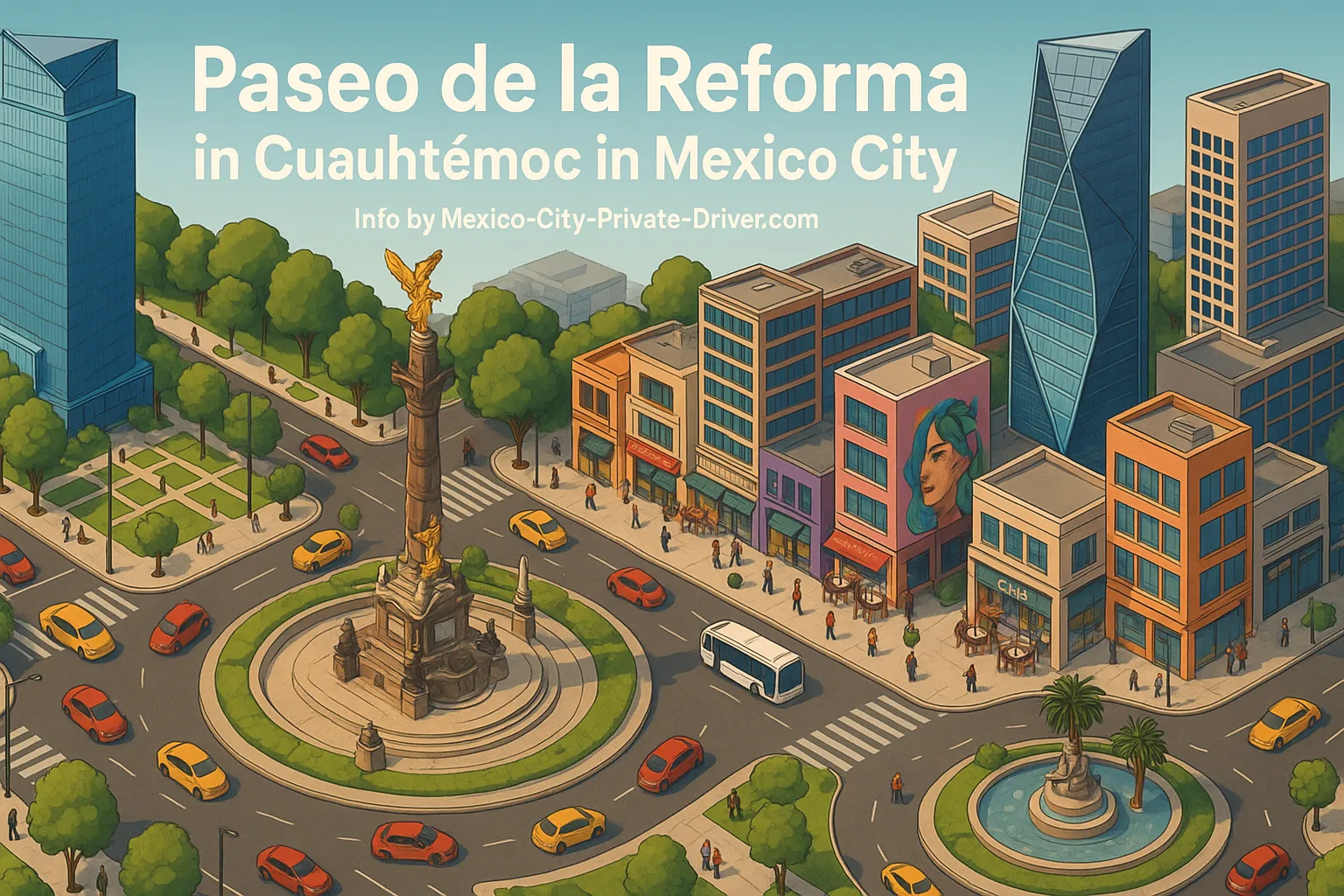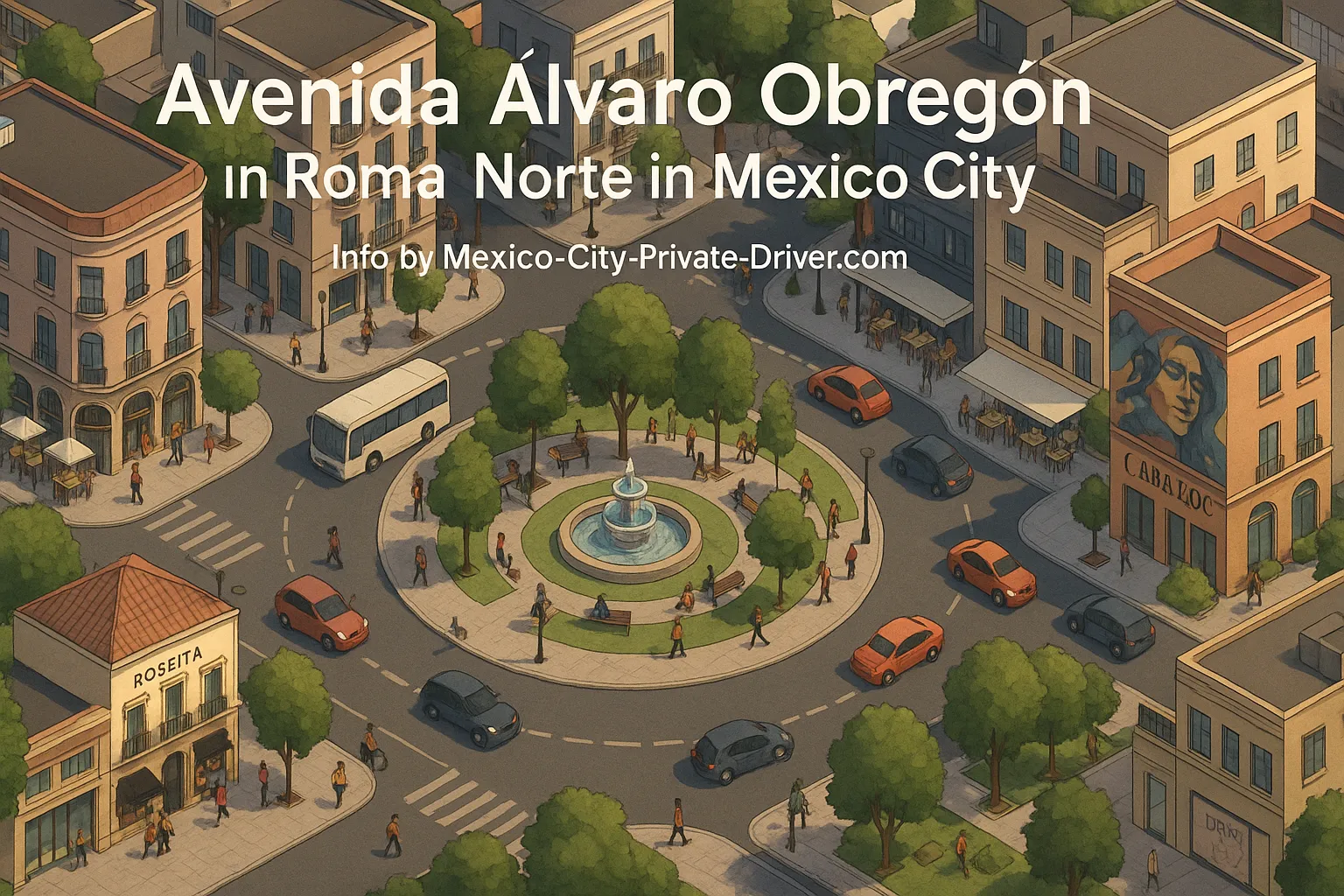Why Motolinia matters to me — and why it should matter to you
As the owner and main driver at Mexico-City-Private-Driver.com, I spend my days weaving through the maze of streets that make up the Centro Histórico. Of all the lanes, avenues, and pedestrian arteries in this part of Mexico City, Calle Motolinia has a special place in my itinerary—and in my heart. It is a compact, living piece of the old city: a narrow colonial-era street that sits a few blocks west of the Zócalo, tucked among plazas, churches, tiny museums, and offices. For travelers who want to experience the Centro Histórico beyond the obvious postcard shots, Motolinia offers a concentrated slice of history, culture, and practical convenience.
Quick orientation: where Motolinia sits in the Centro Histórico
If you imagine the Zócalo as the center of a compass, Motolinia is a short walk to the west and slightly north, threading through the dense colonial grid that characterizes downtown. Locals refer to it as Calle Motolinia, but for SEO and search variations you’ll also see it as Motolinia Street, Motolinia in Centro Histórico, or occasionally (incorrectly but commonly) as Avenida Motolinia or Motolinia Avenue. All of those queries point to the same narrow, history-steeped street that sits among other well-known axes of the historic center.
Nearby landmarks that I use as pickup and drop-off references include:
- The Plaza de Santo Domingo and its church (a stone’s throw away).
- Walking distance to the Zócalo / Plaza de la Constitución (roughly 5–12 minutes on foot depending on your pace).
- Close to tourist corridors like Calle Madero (the pedestrian street) and the Torre Latinoamericana.
- Connected by short streets to the avenues that feed traffic into Centro: Eje Central (Lázaro Cárdenas), Avenida 20 de Noviembre, and Avenida Hidalgo.
What the street looks and feels like
Motolinia is a classic colonial street: somewhat narrow, with buildings that frequently open into interior courtyards, old balconies, and facades that tell centuries of stories. It’s not a sweeping boulevard like Reforma; it’s intimate. In practice this means:
- Limited on-street parking: spaces are tight, most spots are for residents or short-term loading/unloading.
- One-way segments and delivery windows: Centro Histórico has a lot of one-way patterns to regulate flow—I always check the municipal signs before I attempt a drop-off.
- Lots of pedestrian traffic: Motolinia is within the walking orbit of major tourist sites; expect groups, school trips, and street vendors.
Traffic, driving, and parking — the practical side only a driver knows
When I take clients to or from Motolinia—whether they’re staying in Polanco, Condesa, Roma, or at a hotel right on the Zócalo—my main priorities are time, convenience, and avoiding the fines. Here are the essentials I follow every day.
Typical traffic patterns
- Rush hours: mornings (7:30–9:30) and late afternoons (17:00–20:00) on feeder avenues like Reforma and Eje Central are the worst. From Polanco to Centro, expect at least 30–45 minutes during peak times; off-peak you can cut that to 15–25 minutes.
- Midday tourism spikes: 11:00–15:00 sees heavy pedestrian flow near the Zócalo, Calle Madero, and the plazas. This makes Motolinia busy with drop-offs and short walks rather than long parking stays.
- Weekends and holidays: demonstrations, official events, and cultural festivals often center on the Zócalo and can suddenly close arterial streets. I watch municipal announcements and local radio; it’s saved me—and my clients—many delays.
Parking and legal tips only a private driver would tell you
- Don’t rely on curbside parking on Motolinia: it’s usually reserved or too tight for comfort. I always plan a nearby legal drop-off zone on a wider street.
- Use authorized parking garages: the safest option is to park in a secure private lot near Torre Latinoamericana or Alameda Central and walk 3–10 minutes. For VIP clients I arrange valet or hotel garage parking in advance.
- Be strict about loading/unloading times: municipal inspectors (and sometimes the traffic police) ticket vehicles double-parked in the Centro. A 3–6 minute good-bye is fine; anything longer and you’re risking a fine or towing.
- Tour bus permits: if you’re bringing a large group, ask me to coordinate the permit. Tour buses are only allowed in specific zones at scheduled times; I handle the paperwork and timing so we don’t get turned away.
Public transportation access near Motolinia
For visitors who prefer to mix private driving with public transit, Motolinia is well placed.
- Metro: Several Metro stations are within walking distance of Motolinia. Zócalo (Line 2) and stations that serve the Centro are typically 5–15 minutes away by foot or a very short taxi ride.
- Trolebús and Metrobus lines: Major avenues around the Centro Histórico—Eje Central, 20 de Noviembre, and Reforma—have frequent bus services. They’re great if you want to experience local transport, but for door-to-door convenience I recommend a private vehicle.
- Ride-hailing and taxis: regulated taxis and ride-hailing apps operate widely in Centro; however, getting a car directly to a narrow street like Motolinia can be restrictive. That’s where I add value: precise, permitted drop-offs and quick pickups.
The benefits of hiring a private driver for Motolinia and Centro Histórico
Why hire me instead of taking an app car or public transit? Because Centro Histórico is dense, regulated, and full of micro-details you only learn by doing. Here’s what I bring to the table:
- Door-to-door precision: I know which blocks allow quick legal stops, where the loading zones open and close, and how to time pickups around church masses, school dismissals, or protests.
- Local knowledge: I’ll route you to the best nearby parking garage, recommend which entrance to use at the museum, and tell you which cafés have the best courtyard views.
- Security and comfort: I carry water, can keep your luggage locked in the trunk during quick detours, and I understand how to avoid the worst traffic snarls without sacrificing the experience.
- Flexibility: Want to detour to Condesa for lunch after an early morning at Motolinia? No problem. From Motolinia I can plan an afternoon that includes Reforma viewpoints, the Roma tree-lined avenues, or Polanco dining.
Insider walking route I often recommend for Motolinia visitors
One of the best ways to appreciate Motolinia is to walk a compact loop that lets you see churches, plazas, and hidden courtyards without losing time.
- Start with a drop-off on a wider avenue near the Plaza de Santo Domingo so you don’t waste time hunting for street parking.
- Walk Motolinia north to south (or the reverse) and take the side streets—there are often courtyards and small galleries that open to the public.
- Finish at Calle Madero and stroll toward the Torre Latinoamericana for the rooftop view or toward the Zócalo for a coffee on the plaza.
This compact loop is typically a 45–90 minute stroll depending on stops. If you want a guided stop at a private courtyard or a specialty restaurant, I can pre-arrange reservations so there’s no waiting.
Custom route suggestions from common pickup points
- From Polanco: Best route is Paseo de la Reforma eastbound to Avenida Hidalgo or Eje Central, then a planned drop near 20 de Noviembre. Travel time: 20–40 minutes depending on rush hour. I often take a slightly longer but faster route through Reforma to avoid congestion on smaller feeders.
- From Condesa/Roma: Insurgentes south to Reforma, then steer into the Centro via Juárez or Eje Central. These neighborhoods are close enough for a quick transfer (10–25 minutes) but watch Friday evenings and Sunday brunch times for extra congestion.
- From the airport: Allow for 30–60 minutes depending on flight arrival time and Reforma traffic. I coordinate meeting points at hotel valets (Gran Hotel Ciudad de México, Hotel Zócalo Central) for a seamless handover.
Local tips only a private driver would tell you
These are the small, practical things that make a big difference in the quality of your visit—and in avoiding frustration.
- Tell me the time, not the place: Give me a meeting time window rather than a single minute. In Centro Histórico, events, parades, and police diversions can change a street’s accessibility by the minute.
- Pack light for Motolinia: short, walkable streets and stairs in old buildings mean heavy suitcases are a hassle. If you must bring large luggage, I’ll coordinate a hotel valet or garage access.
- Reserve restaurants and private courtyards in advance: many of the small historic courtyards near Motolinia seat only a few dozen people and need reservation—especially for lunch between 13:00–15:00.
- Dress for shade and sun: some cobbled alleys can be bright and hot in mid-day, others shaded by tall buildings. Layers are your friend.
- Watch protests and ceremonies: national holidays and political rallies usually center on the Zócalo and can spill onto surrounding streets. If you have a plane to catch, we’ll prioritize leaving earlier.
Nearby attractions I routinely pair with a Motolinia stop
Motolinia is a great hinge point if you want to stitch together a fantastic half-day or full-day loop around the Centro Histórico and nearby neighborhoods.
- Plaza de Santo Domingo and church: a short walk from Motolinia, a great first stop to absorb colonial architecture.
- Torre Latinoamericana: for panoramic city views—easy to combine with Motolinia and a café stop.
- Palacio de Bellas Artes and Alameda Central: a comfortable stroll and great for those who appreciate art and sculpture gardens.
- Templo Mayor and the Zócalo: archaeology and democracy in the same square—wonderful for history lovers.
- Roma and Condesa: perfect after a Centro morning—contemporary dining, design boutiques, and tree-lined avenues to contrast the colonial core.
Why Motolinia makes for excellent hotel pickups
Guests staying in the historic core—Gran Hotel Ciudad de México, Hotel Zócalo Central, and boutique stays like Downtown Mexico—often want a private driver because:
- Easy morning pick-ups: I can time pickups to avoid late check-out logjams at hotel lobbies.
- Seamless luggage handling: hotels have narrow driveways; I coordinate directly with concierge teams so we minimize waiting and maximize comfort.
- Flexible afternoon returns: if your flight is late, I’ll find secure garage parking nearby and drop you at the airport on time without long waits in heavy Centro traffic.
The “wow” story I tell every guest about Motolinia
Here’s one of those moments that makes this job feel less like driving and more like being part of people’s memories.
One rainy afternoon I was scheduled to drop off a small group of photography students near Motolinia. The street was gray, the umbrellas popped like mushrooms, and most tourists were sheltering inside museums. I negotiated a quick drop-off next to a church façade and walked my clients the few steps toward a nondescript door that opened onto a courtyard. Behind that door was a private, six-century-old courtyard that had been converted into a tiny, private photo studio and gallery. Leather-bound ledgers on a shelf told stories of a family that had lived there for generations, and the group found themselves photographing light that poured through latticed arches—light that had fallen the same way for hundreds of years. One of the students whispered, “It feels like the city keeps its secrets for those who know how to ask.”
I tell that story because Motolinia is like that. To the casual passerby it’s one of many small streets in the Centro. To a guest who asks, follows a guide, or hires a driver who knows the gates to knock on, it can be a portal to very private, very old experiences. That element of discovery—finding a quiet courtyard, a rooftop with a view of domes, or an artisan studio tucked away from the main plazas—is the real “wow” I deliver.
Safety, etiquette, and cultural context
Centro Histórico is safe in the daytime if you follow common-sense precautions. As a driver with years in the center, here’s what I tell my clients:
- Carry essentials in a front-facing bag: pickpocketing is mostly opportunistic in crowded plazas. Keep money, passports, and phones close.
- Respect religious and cultural events: churches on Motolinia still hold regular masses. If a ceremony is taking place, step back and enjoy rather than interrupting with cameras close-up.
- Time your museum visits: many sites in Centro close earlier than modern museums—aim to arrive before 16:00 if you want a relaxed visit.
How I plan a Motolinia-centered day for different types of travelers
Below are sample itineraries I routinely adapt depending on client interests.
For the first-time visitor (half day)
- Pickup at your hotel in Polanco or Condesa early morning.
- Drive to Motolinia, quick drop-off for walking tour (Santo Domingo, Motolinia, small galleries).
- Short walk to Torre Latinoamericana for rooftop view.
- Lunch in a classic Centro restaurant or transfer to Roma for a modern bistro.
For the photographer or history buff (full day)
- Start at Motolinia for morning light in courtyards.
- Guided visit to Templo Mayor and the Zócalo.
- Afternoon at Palacio de Bellas Artes and Museo Franz Mayer, with garage parking arranged.
- Sunset drive along Reforma with stops at iconic monuments.
For families or seniors (comfortable pace)
- Short walks with multiple rest breaks—drop-offs as close to entrances as municipal signs allow.
- Coordinate wheelchair access and elevator locations in advance (I call ahead to museums and restaurants).
- Easy return to hotels in the early afternoon to avoid evening crowds.
How to book and what to tell me in advance
To make your Motolinia visit flawless, tell me these things when you book:
- Your hotel name and room number (so I
Martin Weidemann is a digital transformation expert and entrepreneur with over 20 years of experience leading fintech and innovation projects. As a LinkedIn Top Voice in Digital Transformation and contributor to outlets like Forbes, he now brings that same expertise to travel and mobility in Mexico City through Mexico-City-Private-Driver.com. His focus: trustworthy service, local insights, and peace of mind for travelers.


